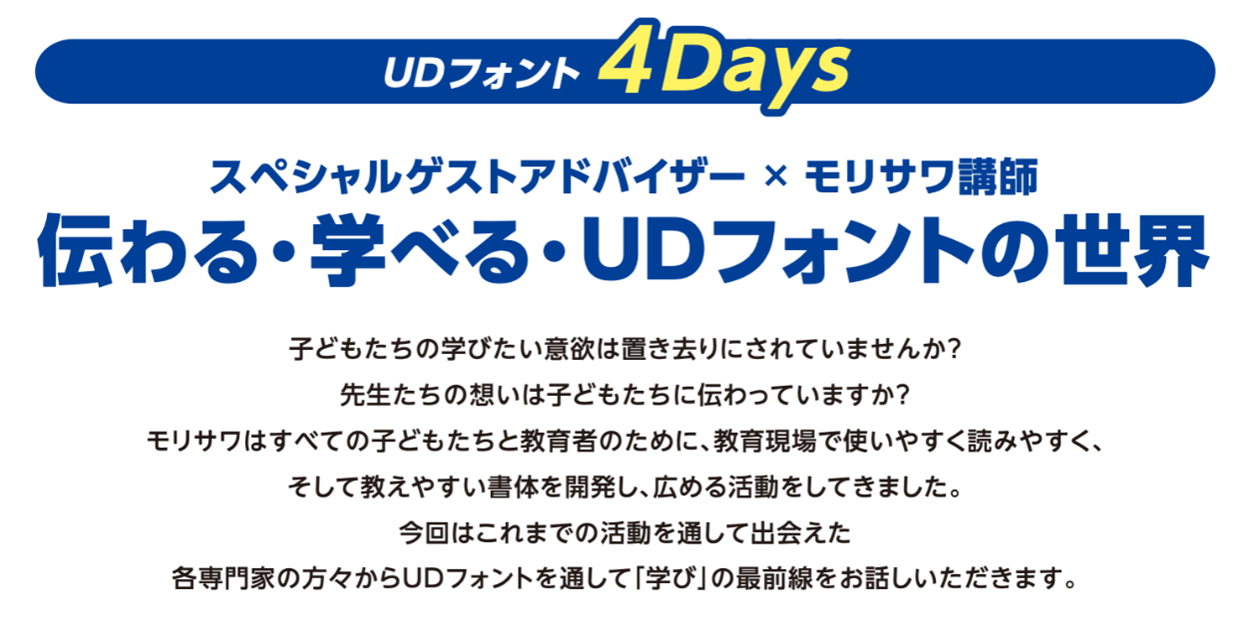We held a total of four online seminars under the theme of "The World of Universal Design Fonts: Communicating and Learning." Here is a report on the online seminars, in which various experts we have met through our activities spoke about the cutting edge of "learning" through Universal Design fonts!
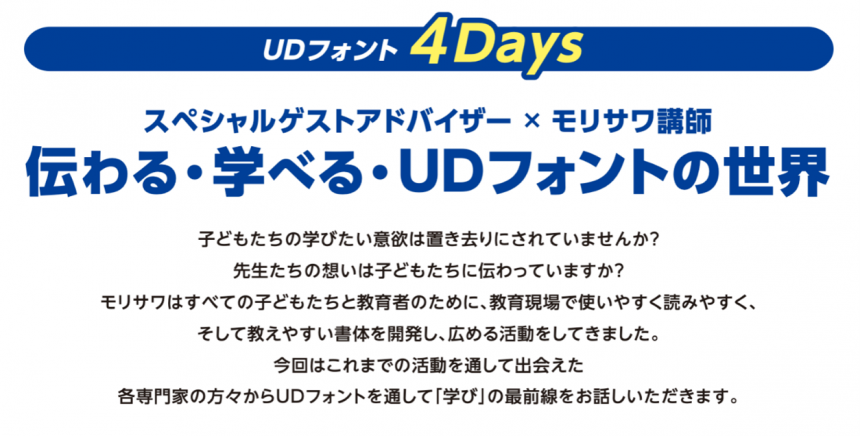
Seminar Report: Day 1
Inabe City's "SDGs Japan Model" Declaration: UD Font and the Future of Education
Reporter: Morisawa Noguchi
The first UD Font 4-Day Online Seminar was held on July 13, 2020.
Mr. Yutaka Sato of Inabe City, Mie Prefecture, gave a presentation titled "Universal Design Font and the Future of Education, as Inabe City Declares Itself a "Japan Model for SDGs"" about Inabe City's thoughts on SDGs and education, and Mr. Hashizume of Morisawa Co., Ltd. gave a presentation on layout tips for creating easy-to-understand "school announcements" that effectively use universal design fonts.
Aiming to build a foundation for the SDGs through UD fonts
Mr. Masataka Sato, Assistant Section Chief, Policy Division, Inabe City, Mie Prefecture
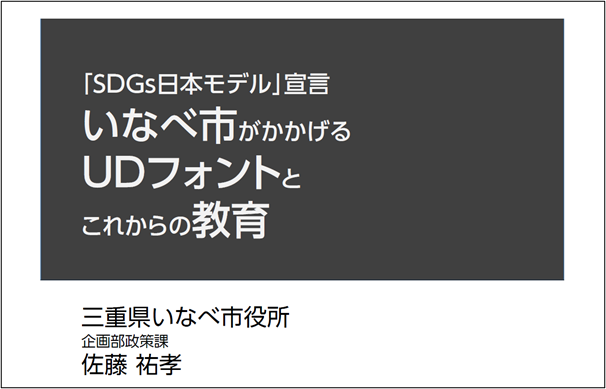
Inabe City, which has been selected as an "SDGs Future City" and is at the forefront of SDGs, has been incorporating an SDGs perspective into its public relations magazine, "Inabe Brand Booklet," since 2018, according to Sato.
A commercial facility called "Nigiwai no Mori" has also opened in Inabe City, and the promotional video for the facility has also incorporated an SDG perspective. However, as the staff's understanding of the SDGs is still insufficient, as a starting point, they have implemented training using card games to deepen their understanding of the SDGs.
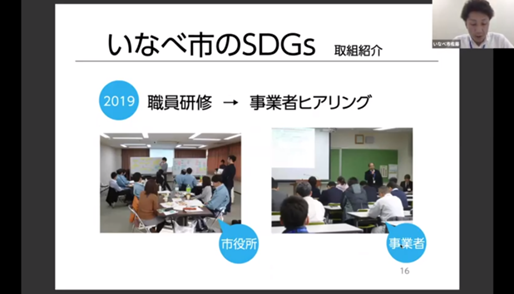
As an example of education, a junior high school in the city collaborated with Morisawa to create "communicative materials." This involved creating presentation materials that communicate the characteristics of wood and metal using universal design fonts (UD fonts), which are easy to read for the elderly and visually impaired. Participating students commented that the lessons they learned were "useful for when they enter society!"
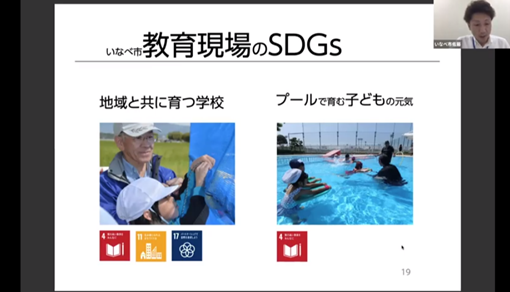
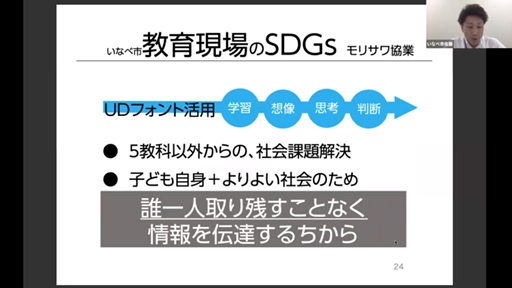
We also heard about the efforts being made during the coronavirus pandemic.
Because it is difficult to provide information to foreign families, Inabe City utilizes Morisawa's multilingual digital book tool, "MC Catalog+." After distributing the machine-translated text, international teachers follow up by phone or other means. MC Catalog+ also has a text-to-speech function, which "should enable smooth learning regardless of language differences or whether or not students have disabilities," says Sato.
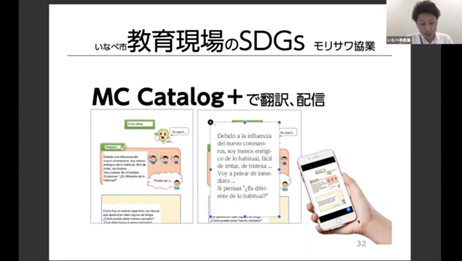
In addition, by using MCCatalog+, users can contribute to the SDGs' goals of "4. Quality education for all" and "10. Reduce inequalities within and among countries," as well as reducing the translation burden on teachers in response to internationalization and saving on printing costs.
Inabe City is working with Morisawa to build a foundation for the SDGs, and signed a comprehensive agreement with them in November of last year. Mr. Sato spoke about his ambition to "raise the local community by disseminating information that leaves no one behind."
Layout tips for creating a clear school announcement
Morisawa Co., Ltd. Public Business Division Hashizume Ming dynasty
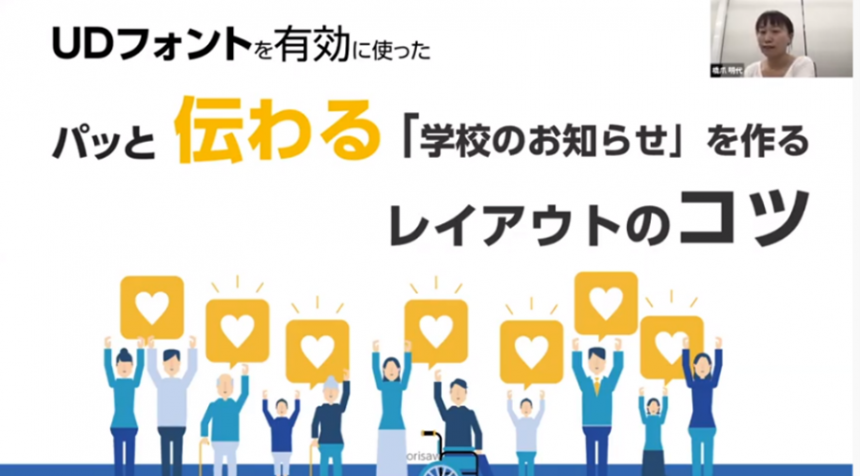
In the second part of the Day 1 seminar, Morisawa Hashizume gave a lecture on layout tips for creating school announcements that go from "communicating" to "being understood."
He explained that "to convey" is difficult to understand at first glance and takes time to understand, while "to convey" is easy to understand and makes you want to read more. He also explained that UD fonts, in particular, have character shapes that are easy to understand for many people, are easy to read, and are less likely to be misread.
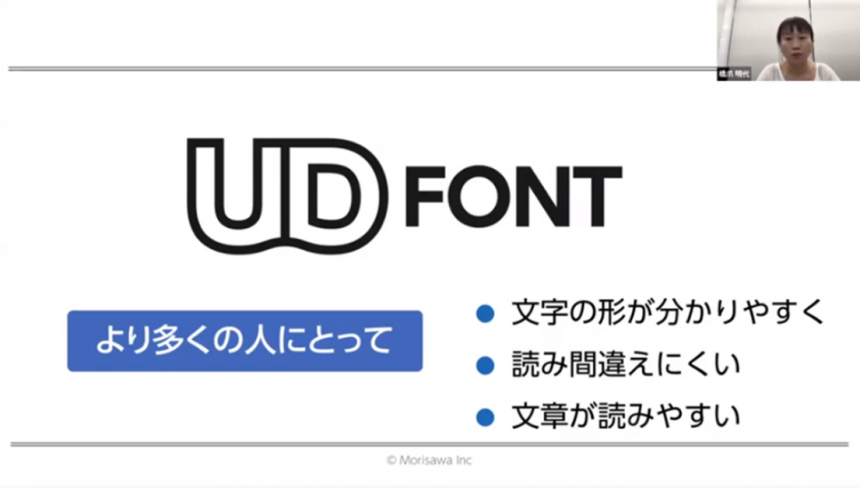
Hashizume says that in order to get the message across, it's important to prioritize the information and use fonts and layouts to emphasize the parts you want people to read, such as making the text larger and bolder.
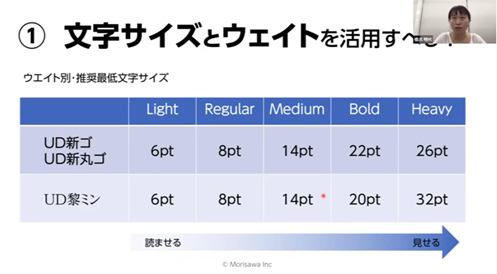
While Word and PowerPoint have editing functions such as italics and art fonts, Hashizume says that "it's best to avoid editing" as this can ruin the UD font. Morisawa also has a number of UD fonts, but using too many in one text can make it look cluttered, so "it's better to narrow it down to a certain extent to make it easier to read."
The online seminar came to a close with the added comment that when creating a layout, it is important to consider who you are communicating with and how to make it easy for readers to absorb the information.
Seminar Report: Day 2
UD fonts used in educational settings and their benefitsteeth?
Reporter: Morisawa Nitano
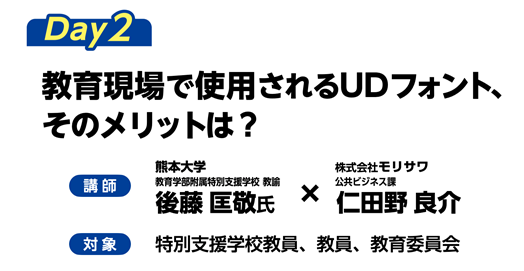
The second UD Font 4 Days online seminar was held on July 20, 2020. Titled "Universal Design Fonts Used in Education: What are Their Benefits?", Professor Goto from the Special Needs School Affiliated with the Faculty of Education at Kumamoto University and Mr. Nitano from Morisawa's Public Business Division spoke about UD fonts, which have recently begun to be used in educational settings, providing basic information on them, reasons for their use, and user impressions.
Basic knowledge of UD fonts
Ryosuke Nitano, Public Business Division, Morisawa Corporation
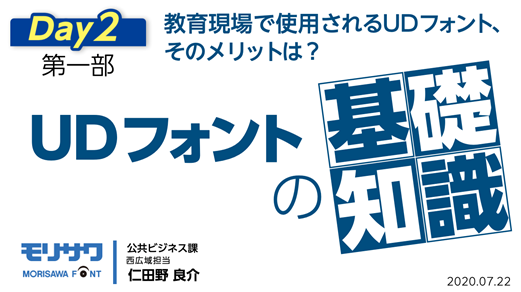
In the first part of this session, Morisawa explained the concept, characteristics, and significance of UD fonts as "Basic knowledge of UD fonts."
Among the various types of fonts (typefaces) that are important for disseminating information, UD fonts are "typefaces that have emerged to meet the needs of the times and are more considerate of the reader than previous typefaces." Furthermore, Morisawa's UD font for education, "UD Digital Textbook Font," is explained as a typeface for learning that takes into consideration low vision and dyslexia.
We introduced the fact that UD fonts are actually being used in elementary school textbooks, and also introduced a case in which a demonstration experiment was conducted by the local government of Ikoma City in Nara Prefecture, resulting in the introduction of UD fonts in all elementary and junior high schools in the city.
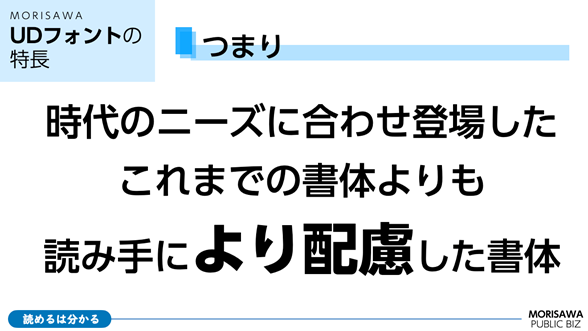
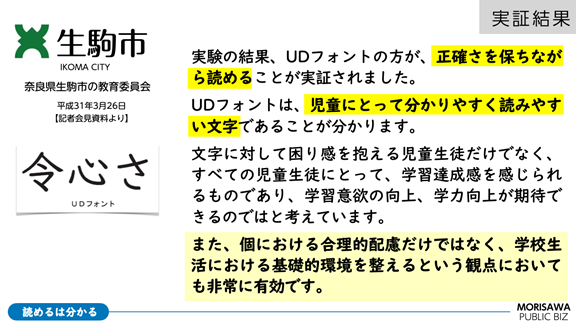
The characters displayed on the screen are extremely important, not only offline but especially online, so I would like you to be a little more conscious of the typefaces you use from now on.
Finally, the message we shared was, "Change the font. There are children who can read just by doing that. There are children who can become motivated. UD fonts are fonts that you choose to use not for yourself but for someone else."
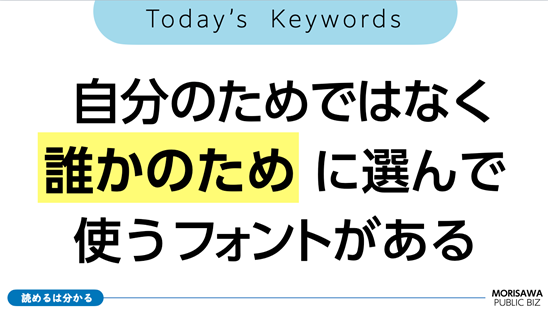
In the second part, Mr. Goto from the Special Needs School attached to the Faculty of Education at Kumamoto University spoke about the importance of "paying attention to how things look," and talked about his encounter with UD fonts through "Teach U - A presentation teaching material site for special needs education" and his impressions of using them.
Universal Design (UD) used in educational settingsFonts: What are their benefits?
Mr. Masaaki Goto, Special Needs School, Faculty of Education, Kumamoto University
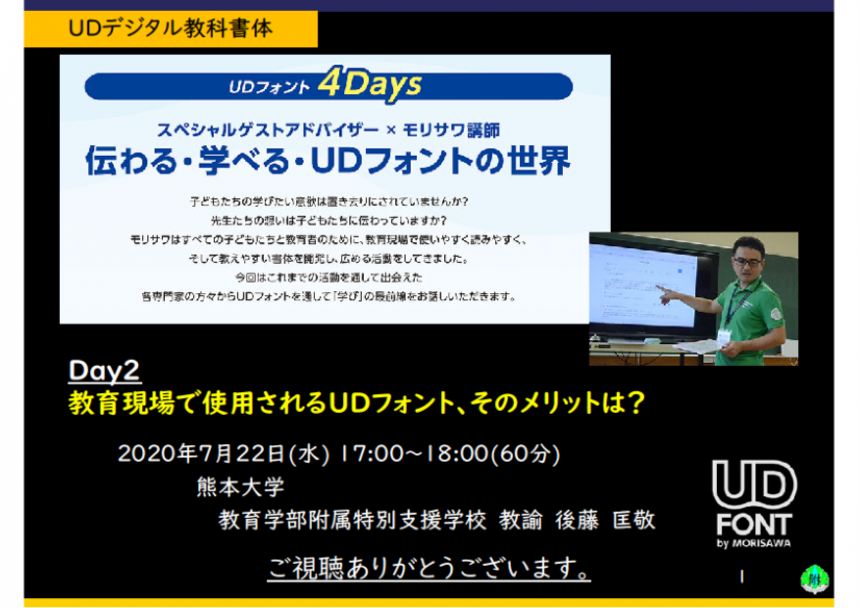
"Has this ever happened to you?" he asked in a gentle tone, starting with the fact that there are children who write the kanji character "北" (north) in a style that is similar to the Ming style. The shape is different when it is handwritten (in the font used in textbooks), so I wondered if they had memorized it from looking at something printed. It was at this time that Mr. Goto realized that "the way characters look is important."
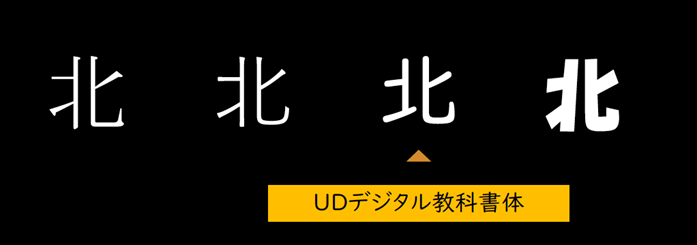
Regarding fonts, the teachers themselves like and use the UD Digital Textbook Font, but they also say that children find it easier to understand if the font is closer to handwriting.
He also said, "Even though there is a lot of information around us, children somehow manage to focus on and acquire the information they need. For this reason, it is very important for information providers to be mindful of how they appear."
He said that when he wrote the words "With a kind heart (,)," he saw a child write the dot (,) in the same way, which made him realize, "How do the other person see you? The person who is sending the message needs to be aware of the perspective of the person who is looking."

In classes at the Kumamoto University Special School, students are working on "learning through screens" by projecting their PCs and tablets onto a large screen. Furthermore, with the increase in online classes this year due to the COVID-19 pandemic, we were advised to pay attention to "fonts that are easy to read on screen."
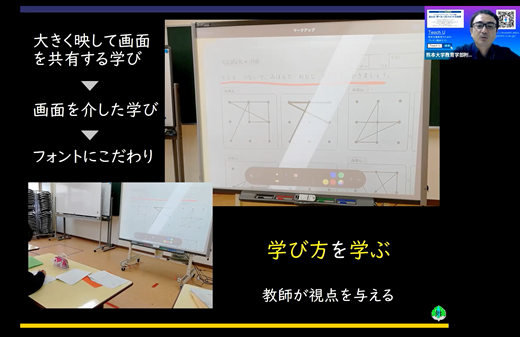
Regarding the UD font, the instruction content confirmation sheet showed high visibility even at small font sizes, and looked good even when enlarged. We received feedback that it was easy to read even when there was a lot of information.
Additionally, Professor Goto is currently running "Teach U - A presentation teaching materials site for special needs education," where he creates teaching materials for children using UD fonts (UD digital textbook fonts).
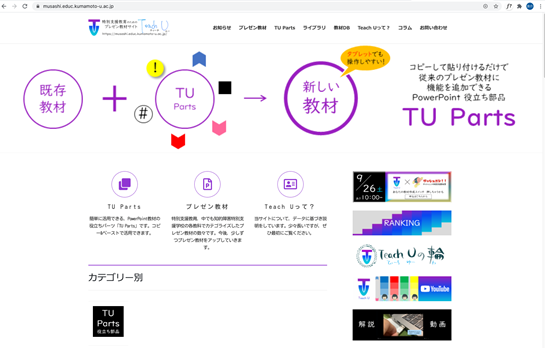
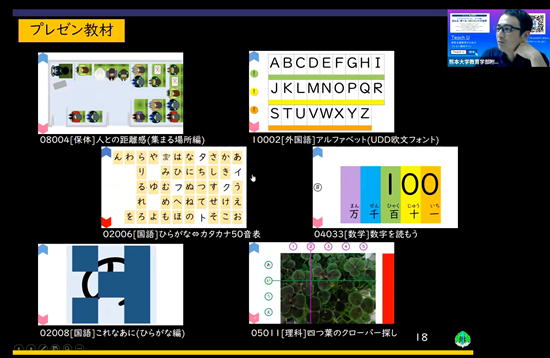
"Each child in a special needs school has a different textbook, and there are no instruction manuals that teachers would normally be provided with. As a result, each teacher has to conduct lessons by trial and error. We started Teach U to help these teachers, and we distribute easy-to-understand, easy-to-use teaching materials," he said, explaining the background and purpose of the launch.
Afterwards, a demonstration was given on the screen of the useful features of [Teach U], and the ease of use was carefully explained.
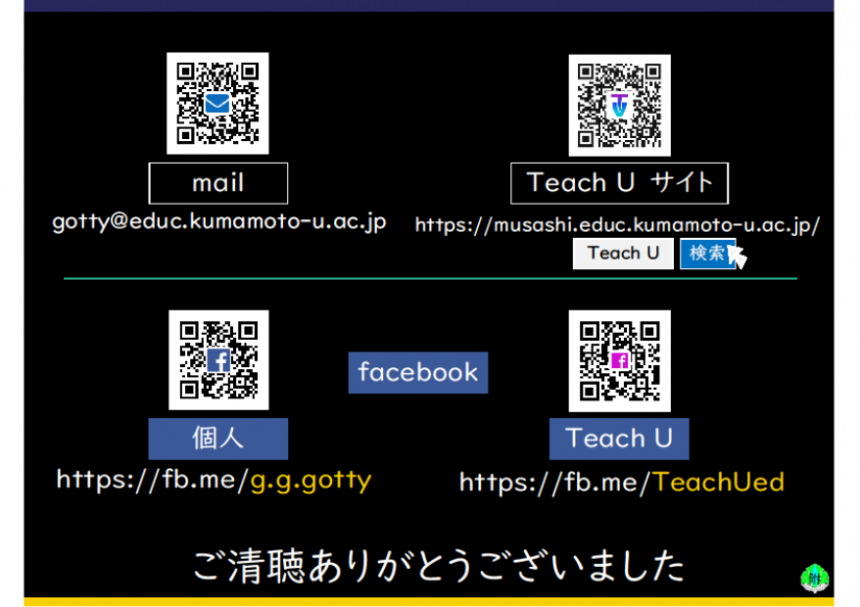
Seminar Report: Day 3
Universal Design and Education
- Future use in textbooks, digital textbooks, and teaching materials -
Reporter: Morisawa Morita
On July 27, 2020, the third session of the four-week seminar series "UD Font 4 Days" was held.
The theme of the day was "Universal Design and Education - Future Use in Textbooks, Digital Textbooks, and Teaching Materials," and Mr. Sakamoto, Executive Officer and Deputy General Manager of Editorial Management at Shinko Publishing Kairyukan Co., Ltd., gave a presentation on the universal design initiatives in the textbooks and other materials published by the company.
Universal Design and Education
- Future use in textbooks, digital textbooks, and teaching materials -
Executive Officer, Business Division, Shinko Publishing Kairyukan Co., Ltd.
Deputy Chief Editor Yoichi SakamotoMr.
The revised elementary school textbooks for the 2020 school year were designed with particular attention to font, color, and layout as part of efforts to make textbooks universally designed, with font in particular being considered since 2016.
When considering a font, they were looking for a typeface that was faithful to the "stops, strokes, and strokes" of textbooks, that also took universal design into consideration, and that was easy to read for use in digital textbooks, and they decided to use our UD Digital Textbook Font.
Furthermore, the English textbooks for elementary schools at Keiryukan are using the UD digital textbook format.European Serieswas adopted.
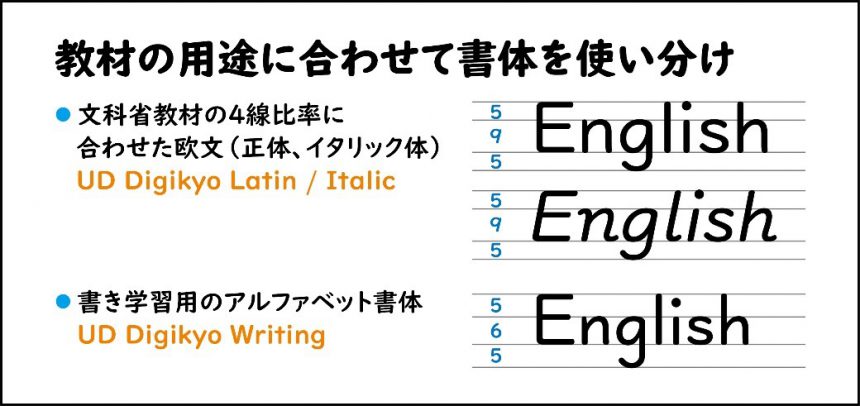
■Multilingual textbooks
Next, Mr. Sakamoto introduced us to a new service called "Multilingual Textbooks" (trial period in 2020), which utilizes our company's multilingual universal information distribution tool "MCCatalog+" to promote the SDGs (Sustainable Development Goals).
Multilingual textbooks are useful for foreign students and returnees who have difficulty reading Japanese.
These teaching materials support the learning of children and students, and are based on the major themes of the SDGs' goals: "4. Quality education for all" and "10. Reduce inequalities within and among countries."
Contributing to society through communicative design
Tatsuhiko Morita, Public Business Division, Morisawa Corporation
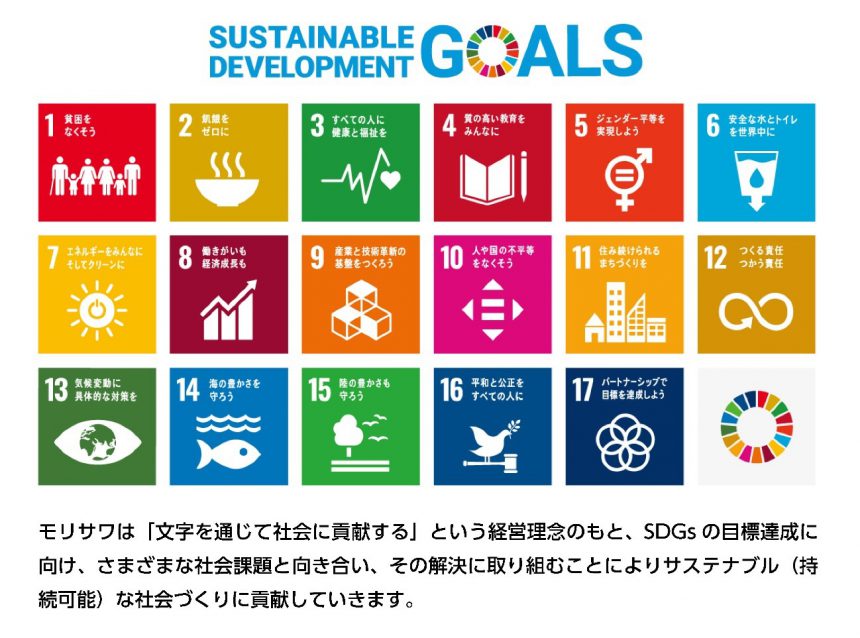
■Contributing to society through design that communicates
During our part in the third "UD Font 4 Days" event, we introduced our products that can help you in your efforts towards the SDGs.
The UD fonts Mincho, Gothic, and Round Gothic are each designed to be easy to read for the elderly and those with low vision, and have been highly praised. We believe that this contributes to the SDG goal of "③ Good health and well-being for all." Furthermore, the UD Digital Textbook Font has been proven and praised in the classroom, and we believe that it can contribute to "④ Quality Education for All."
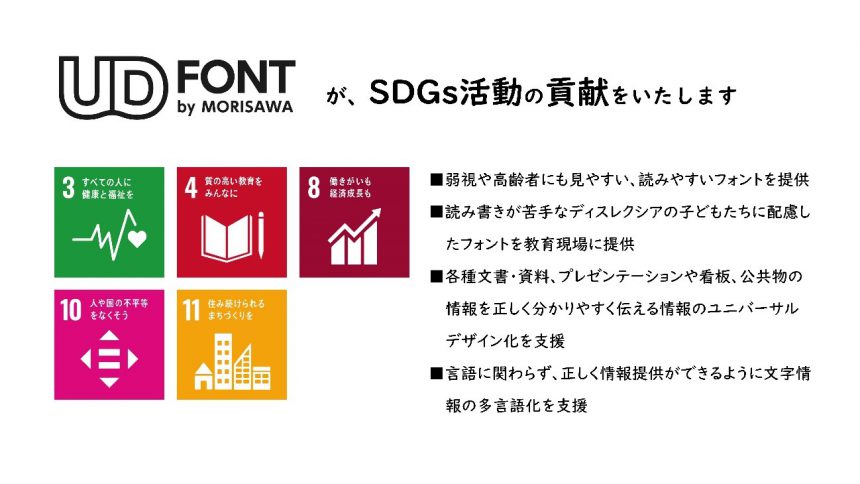
In addition, our diverse range of UD fonts are available in multiple languages, so we believe we can also help those who are working towards the SDGs goals of "10. Eliminate inequalities among people and countries" and "11. Make cities and towns inclusive and sustainable."
We also provide information distribution tools that use UD fonts, and we position these tools as products that contribute to the SDGs.
MCCatalog+ is a multilingual universal information distribution tool that has also been adopted by Kairyukan's multilingual textbooks.
http://www.mccatalog.jp/
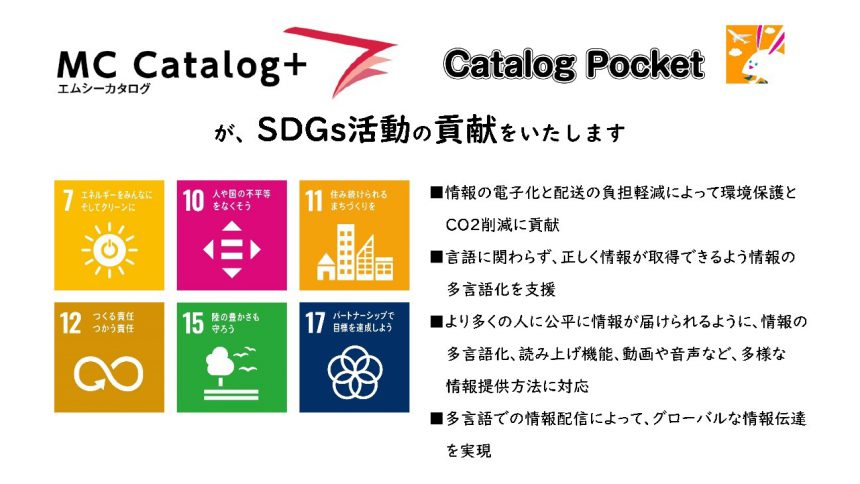
MCCatalog+ is a tool used by those who wish to disseminate information. If you have PDF data, it can be easily converted into multiple languages (10 languages including Japanese) and disseminated to a dedicated viewer (app or browser). *Multilingual voice reading function available.
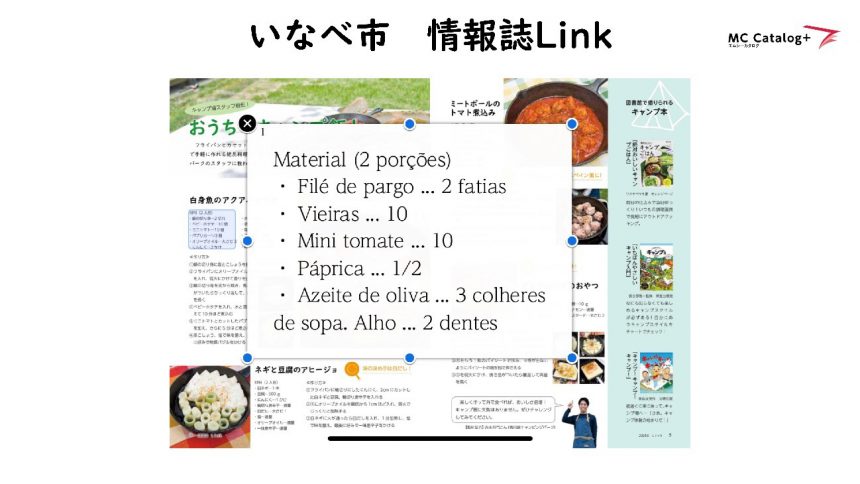
MCCatalog+ has already been adopted by over 170 local governments across the country.
It is usually used to disseminate a variety of information related to daily life and the local area, such as newsletters, tourist information, school lunch menus, and how to sort garbage.
It is also used to send out emergency information when a disaster occurs. By linking it to social media, it is also useful as a tool to spread information as quickly as possible.
〇 "UD font" as an essential character for information
〇 "Multilingual universal information distribution tool MCCatalog+" as a means of delivering information
We at Morisawa hope to continue to be of service to you in disseminating information through the written word.
Seminar Report: Day 4
"UD Digital Textbook Font" is attracting a lot of attention in the educational field.
Introducing the system from the perspective of the developers and teachers who actually use it
Reporter: Morisawa Takada
Day 4 of the UD Font Four-Week Online Seminar was held on Friday, August 7, 2020.
Day 4 focused on the "UD Digital Textbook Font," Japan's first textbook font created based on the concept of universal design. First, the font developer introduced the background and design of the font, and then teachers who are actually using UD fonts in the classroom spoke passionately about the effectiveness of the "UD Digital Textbook Font" and efforts to promote it, including examples.
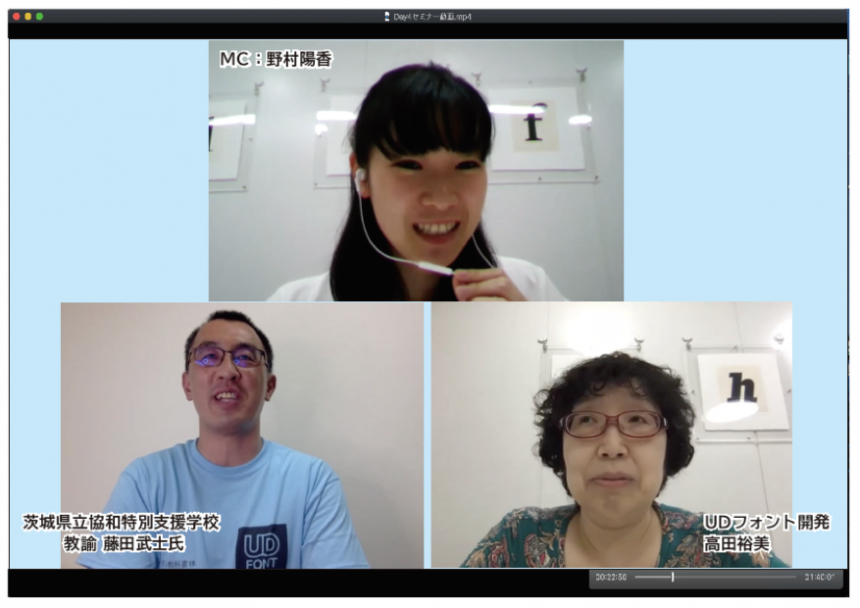
The developer introduces the background and evidence behind the development of UD fonts
Morisawa Corporation Public Business Division
UD Digital Textbook Font Chief Designer Hiromi Takada
BIZ UD Gothic was created in consideration of the social background of Japan, where the population is aging, and to address visual difficulties and misreading caused by presbyopia and blurred vision. However, the developers wondered whether universal design could be described solely in terms of the designer's ingenuity, leading them to contact Professor Yasushi Nakano of Keio University, a leading researcher in low vision, and from this encounter began interviews with affected children, teachers in the field of education, and supporters.
They told us, "We think UD Gothic is easy for children with low vision to read, but it cannot be used in educational settings." This is because, although UD Gothic is easy for people with low vision to read because it displays large characters with a consistent thickness, it differs from the handwritten textbook font taught in schools in terms of the number of strokes and character shapes. From this perspective, we also began developing a UD digital textbook font that complies with the curriculum guidelines.
During development, we met children with a variety of reading difficulties, including those with low vision, dyslexia (a reading and writing disorder), and visual hypersensitivity, and designed the shape to take into consideration the stress each child feels when reading.
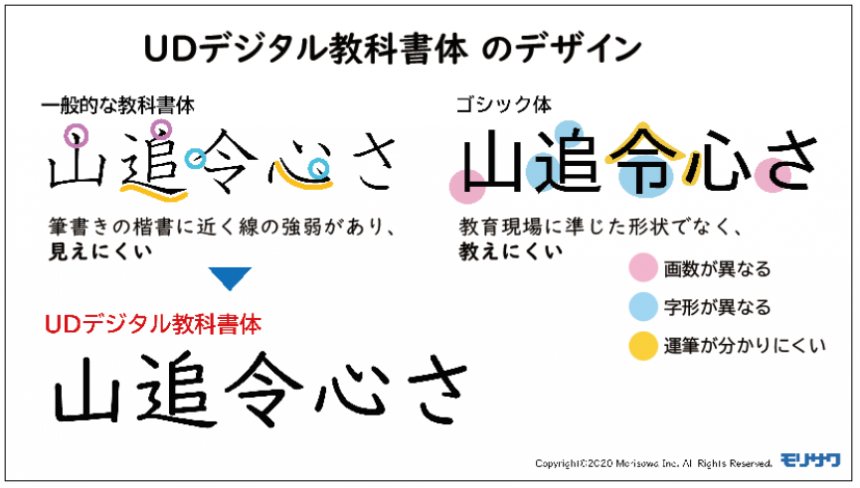

After eight years of development, it was released in 2016 in four weights (thickness). The following year, two weights, "R" and "B," became standard features of Windows 10, gradually spreading to educational settings. Supported by evidence from children with reading and writing difficulties, such as low vision and dyslexia, the "UD Digital Textbook Font" was adopted in many textbooks from 2020, and is also being adopted in some Japanese dictionaries, kanji dictionaries, and encyclopedias. The article also reported on a test conducted in a regular classroom in Ikoma City, where textbooks using the UD Digital Textbook Font showed higher correct answer rates and more students completing all questions than standard textbook fonts.
Examples of UD font use and thoughts on its widespread adoption
Takeshi Fujita, Teacher, Ibaraki Prefectural Kyowa Special Needs School
Fujita explains that he encountered letters, people, and words through the "UD Digital Textbook Font." When he saw the typeface, his first impression was not only that it was easy to read, but that "I liked these letters." After that, he met a UD font evangelist at Morisawa, and at an education-related event, he saw a report by Tomohito Okumura of the LD Center at Osaka Medical College that said, "Changing fonts is the bare minimum of consideration," and those words struck him deeply. These encounters motivated him to start using UD fonts that are easy for children to read in the handouts and slides he creates.
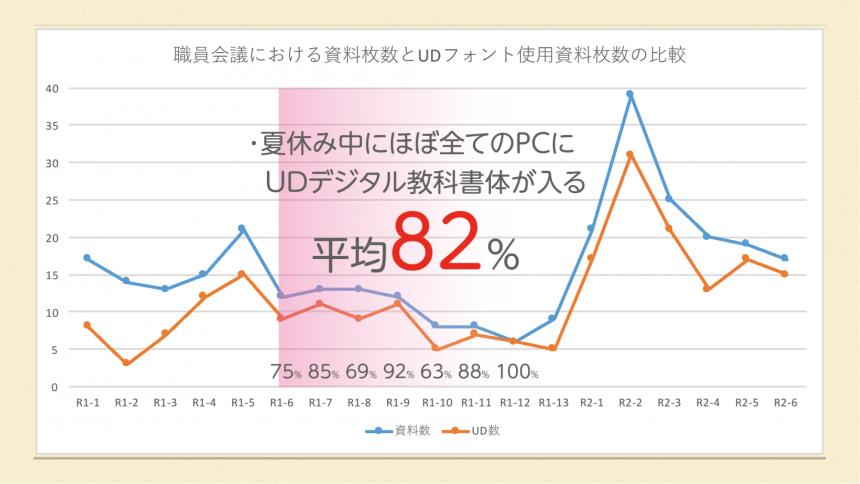
He was transferred to his current school in April 2019, and upon reviewing the materials handed out at a staff meeting, he saw that less than half of the teachers were using UD fonts. Realizing that teachers, in particular, lacked awareness of typefaces, Fujita decided to promote the benefits of UD fonts to teachers. Pamphlets for awareness-raising activities were available for download from Morisawa's website. Furthermore, since UD fonts cannot be used unless they are installed, he aimed for a 100% installation rate and inspected and updated all PCs in the school. As a result of these efforts, teachers' awareness of typefaces has increased, and the average usage rate of UD fonts has reached 80%. Furthermore, this year he plans to create an original training video about UD fonts to be shown at grade meetings.
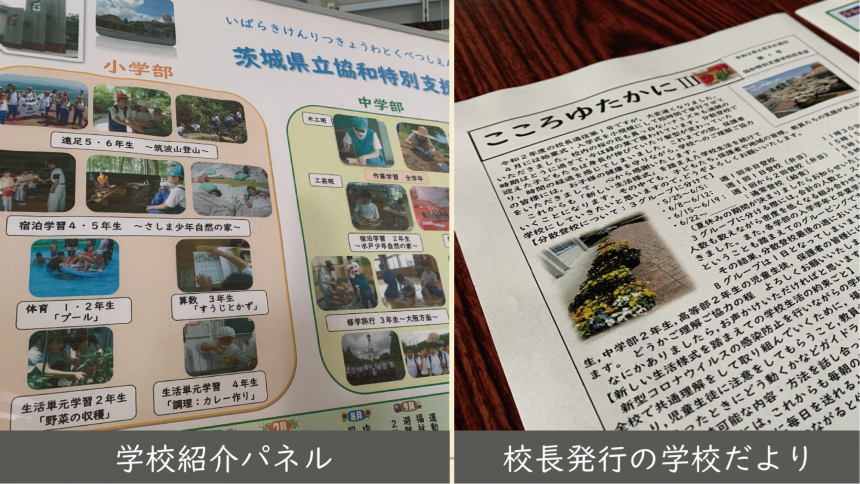
He also wanted to spread UD fonts even further, so he asked his school's principal if he could propose it at the principals' meeting. The principal accepted his request and proposed it at the meeting, and he apparently received many inquiries.
Fujita emphasizes that "changing the font is the bare minimum consideration," and that UD fonts are used for daily schedules and notices, and that the use of UD fonts is also emphasized to parents.
He spoke passionately about his hope that UD fonts will be introduced in all schools in the future, and that UD fonts will be used in all places, including educational institutions, public facilities, and government offices, with typefaces being taken into consideration and appropriate UD fonts being used for specific purposes.
UD Digital Textbook New Typeface Announced
Finally, Morisawa announced that a new stroke order font, "UD Digital Textbook Font," will be added to "MORISAWA BIZ+." He explained that this typeface will not only display stroke order, but also allow users to color-code radicals, easily create games involving assembling character parts, and even create stroke order videos using PowerPoint's animation function. He hopes that this will be useful in creating teaching materials tailored to the children in front of them.
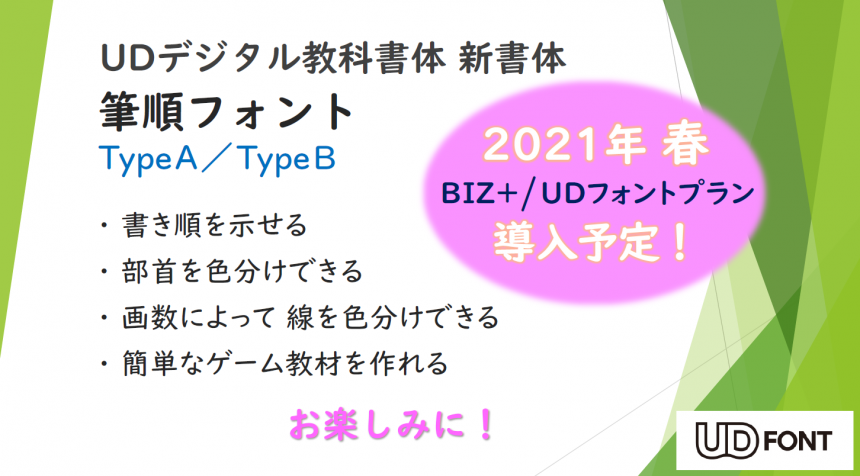
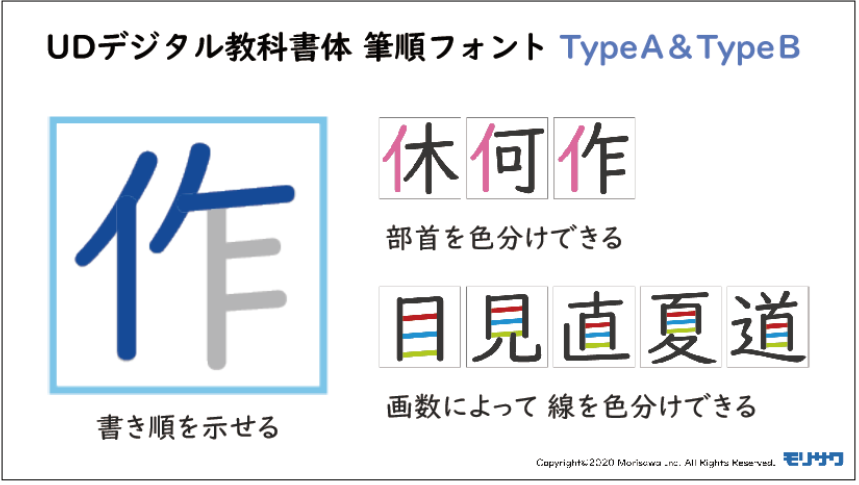
As this was an online seminar, many viewers from all over the country participated.
We received many reactions through questions and chats, making it a very exciting 4-day seminar!

